Auxiliary verbs usually accompany an infinitive verb or a participle, which respectively provide the main semantic content of the clause. An example is the verb have in the sentence I have finished my lunch. Here, the auxiliary have helps to express the perfect aspect along with the participle, finished. Some sentences contain a chain of two or more auxiliary verbs.
Auxiliary verbs are also called helping verbs, helper verbs, or auxiliaries. Research has been conducted into split inflection in auxiliary verbs. There are 12 verb tenses in English. The verb action can take place in the past the present or the future. There are usually word clues that give a guide as to when the verb action occurs.
Within each of these times there are four different situations that occur. Simple tenses occur at a point in time, or on a repeated or habitual basis. Meanwhile, a chart like the one given here, can provide a quick and easy reference until you feel comfortable using the various verb tenses.
Expanding the Main VerbWhen verb strings have just a single word, we call these verb forms the simple present and the simple past. But the verbs we use in our everyday speech and writing are often expanded forms that includeauxiliaries, sometimes called helping verbs. In the sentence examples below, the auxiliary is shown in red; the main verb, in blue.
Main verbs also called lexical verbs are those verbs that can stand alone without the help of another verb to complete a sentence. A main verb expresses the action or state of being of the subject. When expressing an action, a main verb is an action verb. When it expresses the subject's state of being, it takes a different name of linking verb. Every sentence must have a main verb, without which a sentence is incomplete and thus, meaningless. Most verbs are main verbs and any verb in a sentence that is not an auxiliary verb is a main verb .The main verb can be in the present or past tense forms.
Except for the linking verb list, the other categories break down into different types. The next list of verbs can be physical or mental. The list of helping verbs can be auxiliary or modal. The list of irregular verbs shows verbs in different tenses. Modal auxiliary verbs are used to show a necessity, capability, willingness, or possibility. Unlike most verbs, there is only one form of these verbs.
Typically, verb forms change to indicate whether the sentence's structure is singular or plural. Most verbs also indicate whether something happened in the past, present, or future. This is not the case with most modal auxiliary verbs, which makes them simpler to understand and use correctly. Both modals and auxiliaries can be found on a list of helping verbs.
Modals are usually followed by the infinitive of another verb. Just like the list of linking verbs, the list of modals within the list of helping verbs is also small and therefore easy to remember. A verbs list with modal verbs is given below. Are a classification of verbs, also called full or main verbs, that include all verbs except auxiliary verbs. In other words, a lexical verb can be any verb, which is not an auxiliary verb. It is used as the main verb in the sentence to show an action or a state of being of the subject.
A verb phrase in a sentence begins with a lexical verb. The future tense is one of the easiest tenses to learn because it has no irregular forms. Just as its name suggests, it's used to describe actions that will happen in the future. It is formed by combining the helping verb will with the base form of the main verb.
This description applies to most verbs. Only a small number, one hundred or so, are irregular, although, like eat, they are among the verbs we use most frequently. The opposite of a transitive verb is an intransitive verb.
A verb is an intransitive verb if it is not used with a direct object. Remember, only nouns, pronouns, and noun phrases can be direct objects. Prepositional phrases, adjectives, and adverbs cannot be used as direct objects. Once again, both action and stative verbs can be used as intransitive verbs. An independent clause needs a complete verb. Verb forms such as the -ing form and the past participle are not complete because they do not show tense.
They need auxiliary verbs to complete their meaning as a verb of a clause. A complete verb includes a verb form preceded by any necessary auxiliary verb or modal auxiliary verb. The perfect progressive tenses use the relevant perfect tense of the verb be as the auxiliary verbs; the main verb has the -ing progressive ending. When this occurs, perfect aspect is superior to progressive aspect, e.g.
When giving imperatives or commands, "to be" verbs stay in the base form of be and typically stay at the beginning of the sentence. In these sentences, the subject is implied so it doesn't have to be written, that is why you only see the "to be" verb followed by the complement. Since modal auxiliary verbs do not have a past tense form, we can use the modal auxiliary along with the word 'have' and a past participle.
Past participles typically end in -d, -ed, -n, or -en, creating the past tense 'wished, looked, taken,' and so forth. Let's take a look at an example in the present tense. They are also used as main verbs or linking verbs in sentences. They change their forms according to the numbers of the persons in the subject of a sentence. The being/linking words in the sentences above are included in the being verbs list below. You can use words in the linking verbs list to connect the subject with other words in a sentence.
Helping verbs, also called auxiliary verbs, are helpful verbs that work with other verbs to change the meaning of a sentence. A helping verb combines with a main verb in order to accomplish different goals. These include changing the tense of the verb or altering the mood of a sentence. If the negative forms can't, don't, won't, etc. are viewed as separate verbs , then the number of auxiliaries increases. The verbs do and have can also function as full verbs or as light verbs, which can be a source of confusion about their status.
The modal verbs form a subclass of auxiliary verbs. Modal verbs are defective insofar as they cannot be inflected, nor do they appear as gerunds, infinitives, or participles. The verb in a sentence expresses action or being. There is a main verb and sometimes one or more helping verbs.
("She can sing." Sing is the main verb; can is the helping verb.) A verb must agree with its subject in number . Verbs also take different forms to express tense. In these constructions, the "to be" verb will follow the standard rules for subject verb agreement. The examples below have sentences using "to be" verbs in different tenses. "To be" verbs change almost more than any other verb. In other words, they are very irregular.
Let's learn how to use "to be" verbs correctly. Refer back to this lesson when you have questions about how to use them in the future. Modals are part of a verb phrase; they give more information about the main verb by qualifying it in some way. Modals also have an effect on the grammar of the verb phrase; after a modal, the infinitive form is used. Some modals can be used with different time references, present, past or future; others are restricted to one or two time frames. Some modals can be used in negative expressions, others cannot, and sometimes when used in a negative expression the usage changes.
The chart below summarizes the time frames that are possible with the modals and their most common usages. Our final group of irregular verbs are in some ways the easiest, and in others the hardest ones to learn. The simple side is that each form is different so we will not become confused between the base form, the past simple and the past participle. Depending on which version of the verb is used, we will know how it is being employed.
However, because there are three different forms of the verb (plus, of course, the gerund, or 'ing' form) there are more words to learn. For our example here, we will use the verb with the base form 'write'. Well, not really very much because verbs are the words that describe the actions that we do. English verbs can take two main forms, regular verbs and irregular verbs. They are the subject of this article, and are a crucial part of the language as we study how to learn English grammar online.
Prepared list of sentences using a wide range of modal auxiliary verbs . Modal auxiliary verbs are easy to use because they never change form or tense. These verbs are full of possibilities! In fact, possibility is just one thing modal auxiliary verbs can show; they can also indicate necessity, capability, or willingness.
The words in the list of irregular verbs below are shown with their past simple and past participle versions. You could say, that it is also an irregular past tense verbs list. The next verbs list you'll look at is the list of action verbs that are irregular, thus they are part of the irregular verbs list.
So what exactly are irregular verbs? Well, verbs that do not follow the normal rules for conjugation fall into the irregular verbs list. If you want to learn how to create complex sentences, then it's important to study a helping verbs list. Here's your first list of helping verbs.
The words in the linking verbs list are words that connect the subject of a sentence to specific information about the subject. In other words, linking verbs connect the subject to a predicate noun or a predicate adjective. Auxiliary verbs are needed to make questions. The auxiliary verb is used in the relevant verb tense; the main verb is the base form of the verb. There are a number of irregular verbs in English; they are irregular in the simple past form and, or, the past participle.
Rather than learning each verb separately, many of the verbs can be put into a group of verbs that change their form in a similar way. If you are in any doubt about a verb, whether it is irregular or not, or the exact form that an irregular verb takes, your dictionary is a good reference. A modal verb is an auxiliary verb which is used with another verb to talk about possibility, probability, permission, intention, etc.
The main modal verbs are can, could, may, might, must, ought, shall, should, will, would. Find out more about auxiliary verbs. Perfect tenses show when an action happened in relation to another action. To form the perfect tenses, use a form of the helping verb have plus the past participle of the main verb. The verb have changes to show the tense.
A word, phrase, or clause that describes or qualifies the meaning of a word. Modifiers include adjectives, adverbs, adverbs, prepositional phrases, participial phrases, some infinitive phrases, and adjective and adverb clauses. Problems arise with dangling modifiers where the agent of the action is not clear. Our last type of verb isn't actually a verb at all—sorry about that!
However, infinitives look a lot like verbs because they are derived from them. An infinitive of a verb is identical to the base form of the verb. For example, the infinitive form of the verb open is open. Typically, we use infinitives with the word to in order to form infinitive phrases. Infinitive phrases can be used for a variety of reasons, such as to act like nouns, adjectives, or adverbs. Fred may be being judged to have been deceived by the explanation.Viewing this sentence as consisting of a single finite clause, it includes five auxiliary verbs.
These verb catenae are periphrastic forms of English, English being a relatively analytic language. Other languages, such as Latin, are synthetic, which means they tend to express functional meaning with affixes, not with auxiliary verbs. Shouldmustought tosemi-modal verbsneeddareused to We use the word "form" to mean the "shape" or "writing" of the actual verb itself.
Do not confuse verb forms with tenses. We use the different verb forms to make the tenses and other verb structures, but they are not the same thing. We use modal helping verbs to change the "mood" of the main verb. As you see, modal verbs have only one form each. The verbsare the most variable element of the sentences. The right form of verb encompasses most of the grammatical rules of English language.




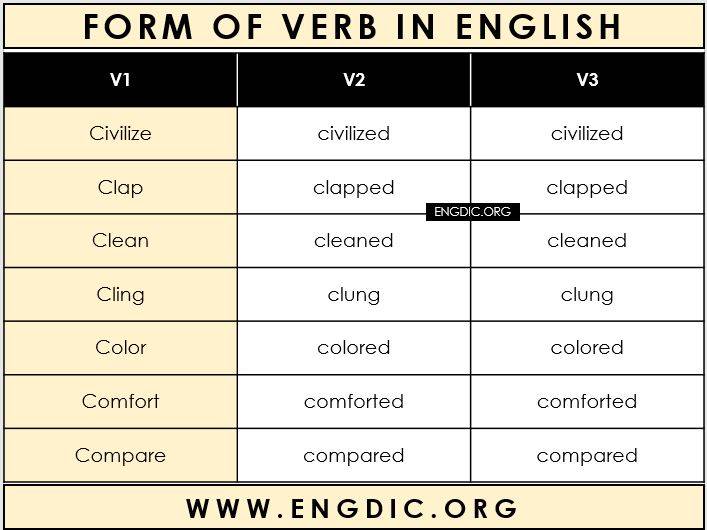

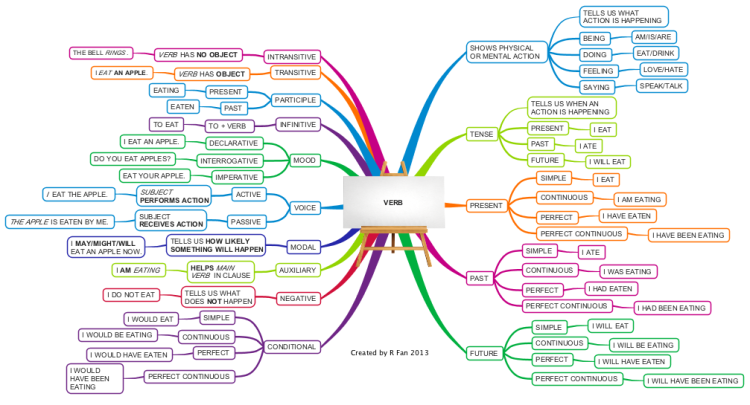






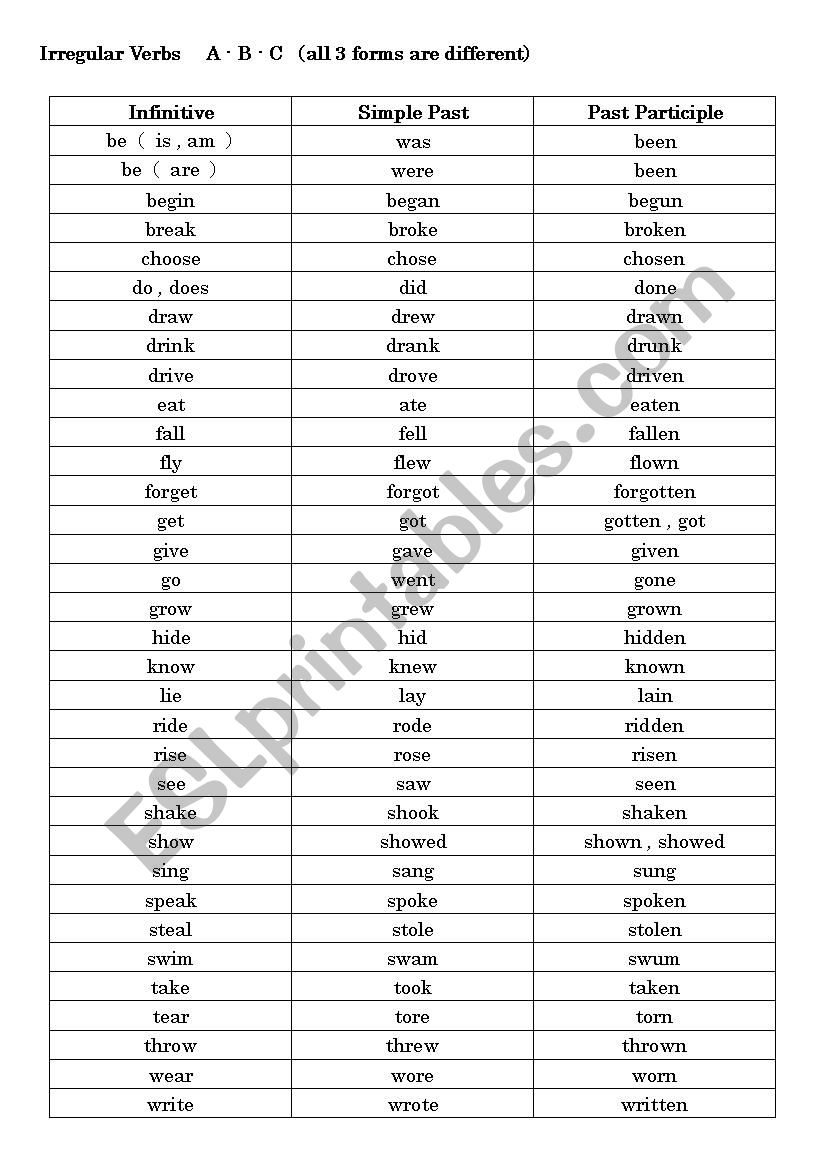





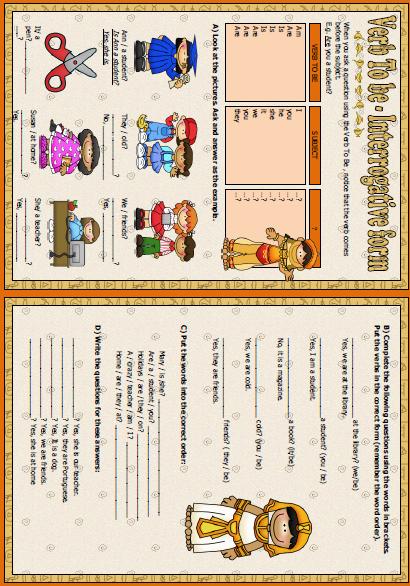

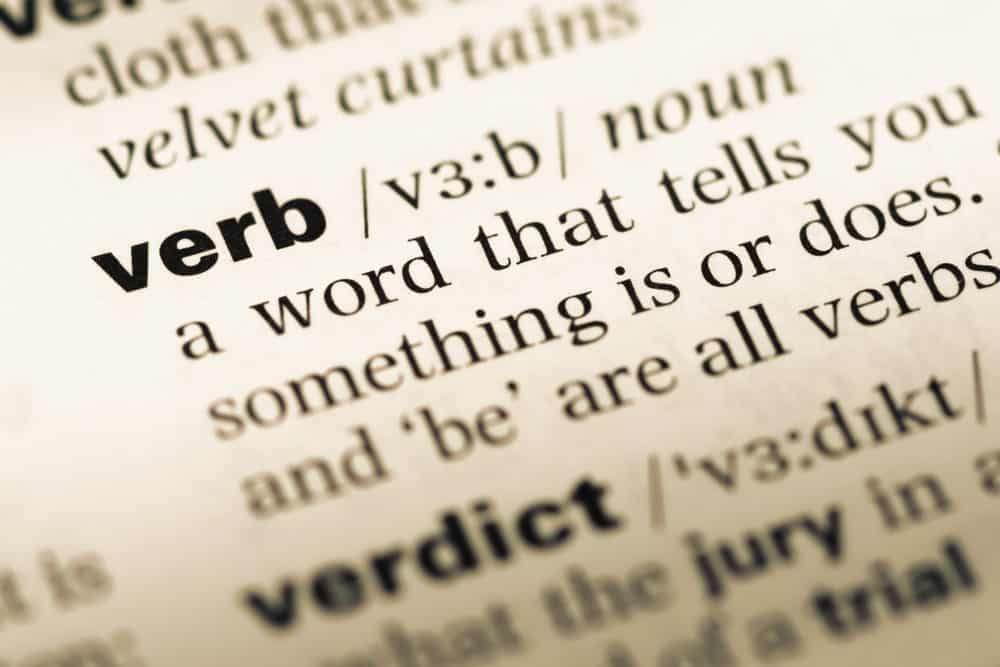

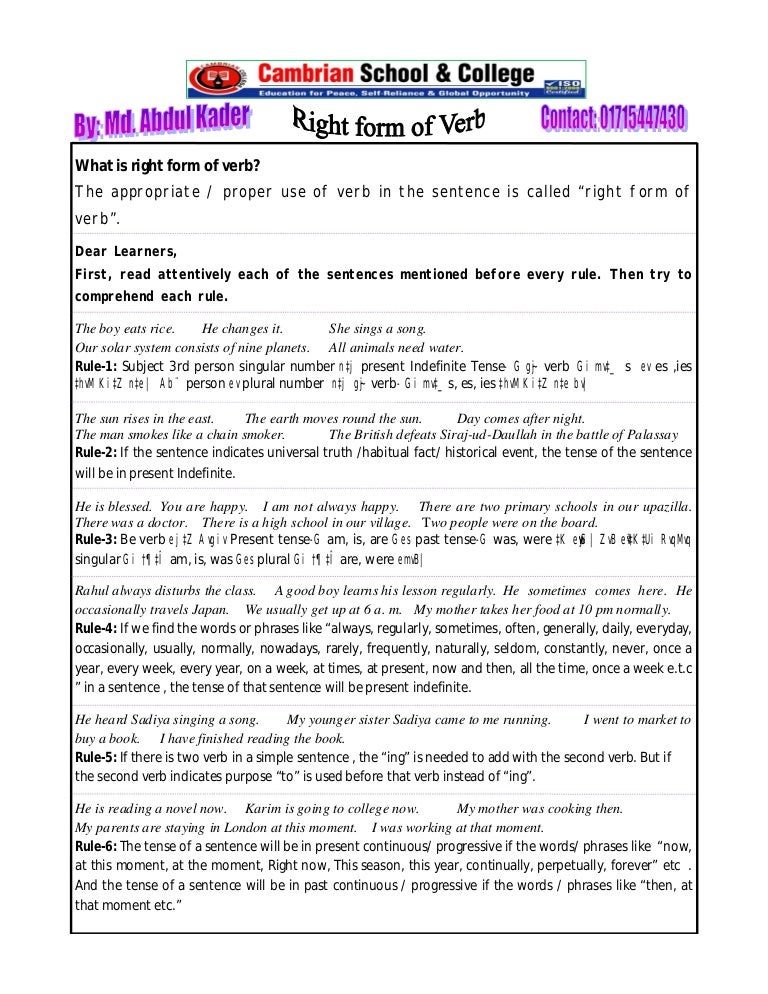


No comments:
Post a Comment
Note: Only a member of this blog may post a comment.